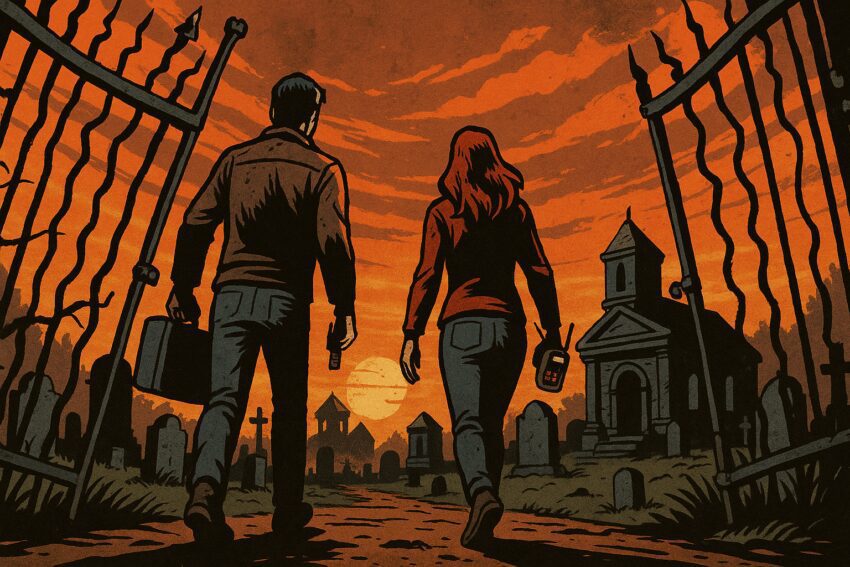
Ghost Hunting In Graveyards And Cemeteries
Not all cemeteries and graveyards are haunted but, in many cases, a soul still lingers for one reason or another. Beginner ghost hunters should pack up their gear and head to a cemetery for a perfect training experience. Get the scoop after the jump.
Table of contents
- Why Graveyards & Cemeteries?
- Ethics Of Ghost Hunting In Cemeteries
- Graveyard Spirits You May Encounter
- Best Times To Investigate Haunted Graveyards
- Ghost Hunting Equipment Recommendation
- Investigation Techniques That Work Outdoors
- Interpreting Activity In A Cemetery
- What To Do After A Graveyard Investigation
- Recap
Audience: This post is for newbie ghost hunters.
In this post, I use the terms, “graveyard” and “cemetery,” interchangeably, but a graveyard means a burial place on church grounds. Cemeteries are burial places without a house of worship on its grounds.
Don’t forget to do your research before you head to that cemetery. The history of the place and its interred really helps with your investigation. See what you can learn about the people buried there, so you have something to talk about with the spirits.
Why Graveyards & Cemeteries?
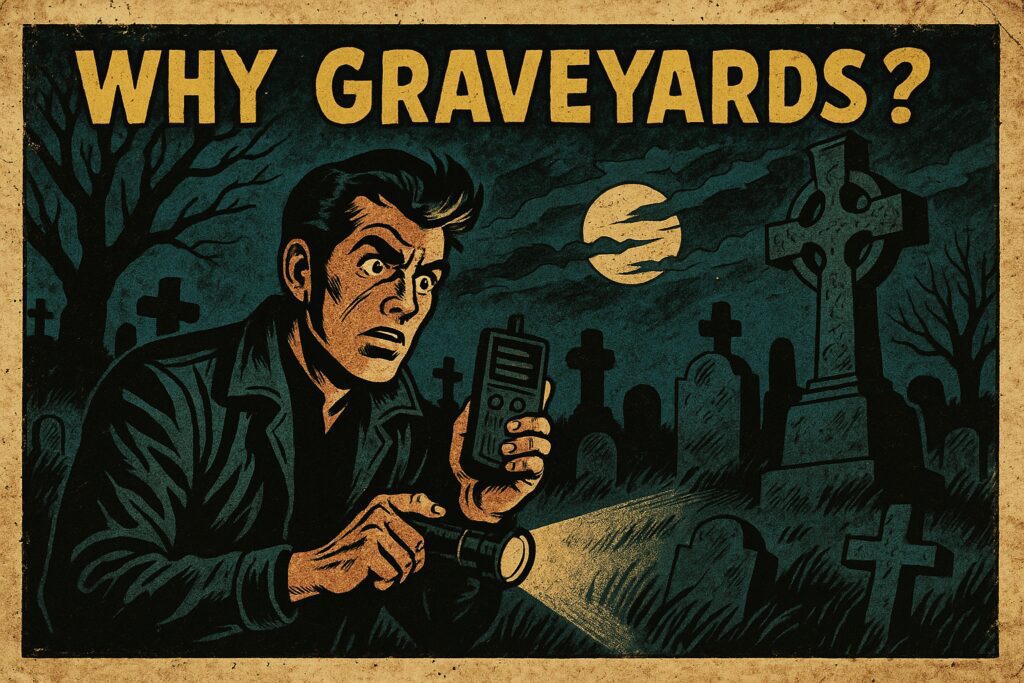
There are a few reasons that cemeteries have spirits.
- A ghost had an improper burial
- Vandalism brings back spirits
- Emotions pull the ghost back from the Veil
- The ghost looks for its body, not realizing they’ve died
In my experience, most graveyards have residual hauntings versus intelligent hauntings. I find an intelligent haunting usually happens with the recently buried, before the spirit has a chance to move on.
Ethics Of Ghost Hunting In Cemeteries
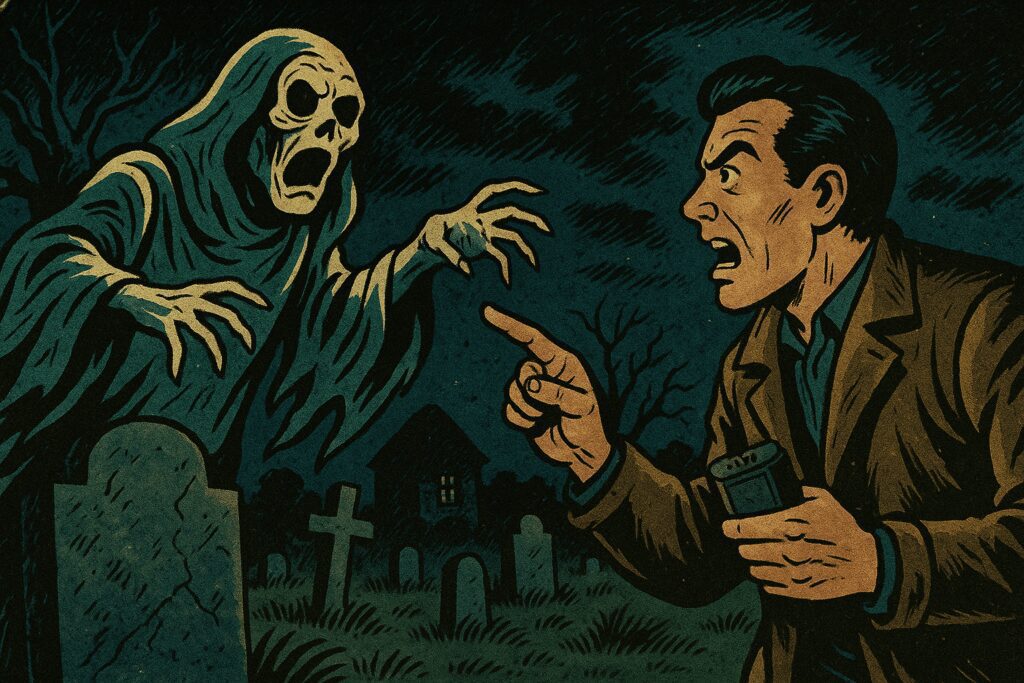
Now, walking into a graveyard with a van full of gadgets and setting up around a family’s mausoleum is a bit tacky. You can be a bit more respectful and less noticeable. I’d recommend these best practices:
- Don’t record a burial to see if the ghost appears: That’s pretty creepy of you … stalker.
- Don’t trespass, most cemeteries are open to the public: More on that in a minute.
- Don’t provoke spirits at the graveyard: You wake them up, they may follow you.
- Don’t take anything with you: Stealing from the dead is some very bad karma.
- Get permission to investigate after hours or on private property.
- Ask caretakers what’s acceptable behavior.
- Respect the culture of the different cemeteries.
- Respect the dead and their families.
Graveyard Spirits You May Encounter
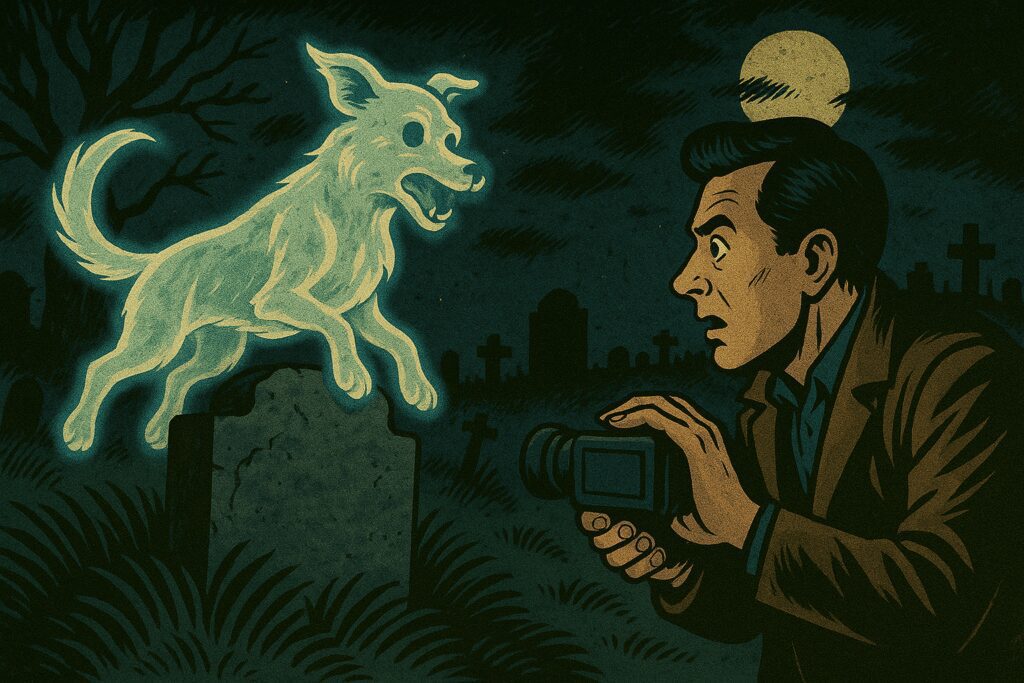
I’ve written about this earlier. Check out the post on spirits you encounter in cemeteries. Here’s a handy-dandy table from that post for quick reference:
| Type | Why They Haunt | What They Look Like | Activity | What To Do |
|---|---|---|---|---|
| Residual Hauntings | Echoes of the past | Faded figures | Repetitive motions | Observe quietly |
| Intelligent Spirits | Unfinished business | Lifelike apparitions | Interact, move objects | Stay respectful |
| Shadow Figures | Feed on fear | Dark silhouettes | Lurk, induce dread | Don’t engage |
| Caretaker Spirits | Duty-bound | Human, work clothes | Inspect graves | Acknowledge them |
| Animal Spirits | Pets or strays | Dogs, cats, horses | Follow visitors, sounds | Treat kindly |
| Phantom Processions | Residual funeral energy | Groups of shadowy figures | Silent marches | Step aside |
| Wailing Women | Grief | Shrouded women | Sobbing, wailing | Offer silent prayer |
| Grave Guardians | Guard graves | Bestial or monstrous | Chase, growl, shove | Leave immediately |
| Spirit Lights | Lure wanderers | Floating orbs | Hover, lead people astray | Don’t follow |
| Poltergeist Activity | Anger or energy disturbances | No form | Loud sounds, moving objects | Avoid provoking |
In my experience, you may capture shadow figures, guardians, animal spirits, and caretaker spirits.
Best Times To Investigate Haunted Graveyards
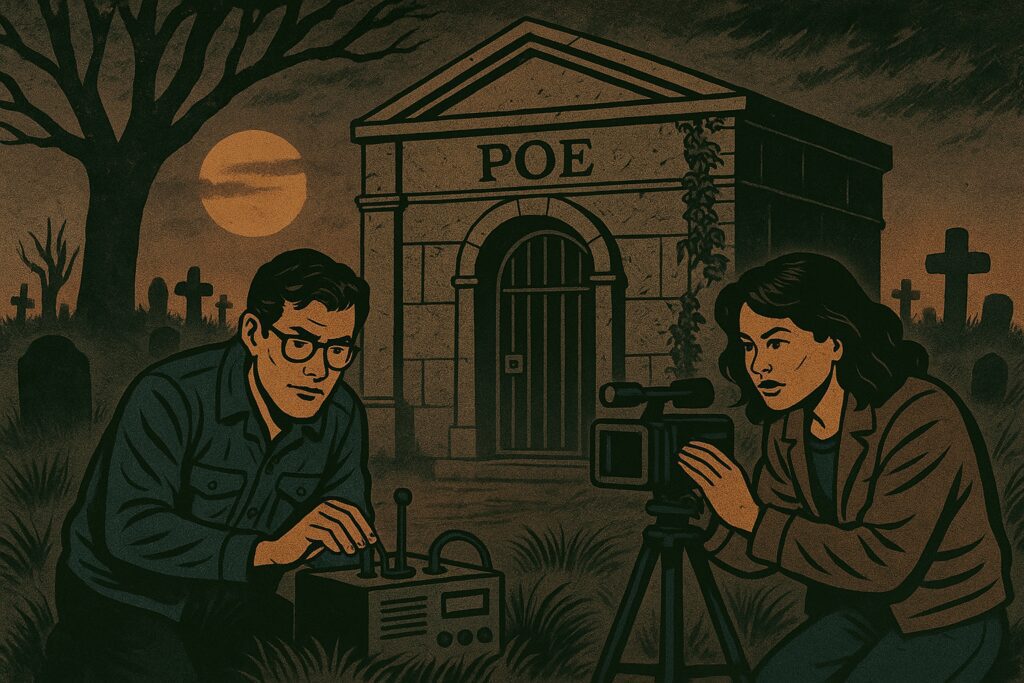
To be frank, cemeteries and graveyards can have a ghostly manifestation at any time of day. However, daytime offers challenges because of living human activity. You may not notice ghostly activities because of the hustle and bustle going on around you.
For me, I find dusk to be the best time. Usually, human activity has slowed down. It’s getting dark, so you could use infrared or full spectrum cameras. There’s less noise pollution, so it’s better for EVPs.
As for night, many cemeteries have set hours like sunrise to sunset or 8 AM – 5 PM. If you go after hours, you’d need to get permission to ghost hunt, which can be awkward when asking permission … cuz ghost hunting is a bit weird to folks.
Now, cemeteries or family plots on private land offer a better chance to investigate at night. You could try an abandoned cemetery, too. However, I find private cemeteries to be the most difficult to get permission.
In most cases, go for an abandoned cemetery or one on public land. Get a permit or written permission to be there. Trespassing is a very easy crime to prove in court … just sayin’.
Ghost Hunting Equipment Recommendation
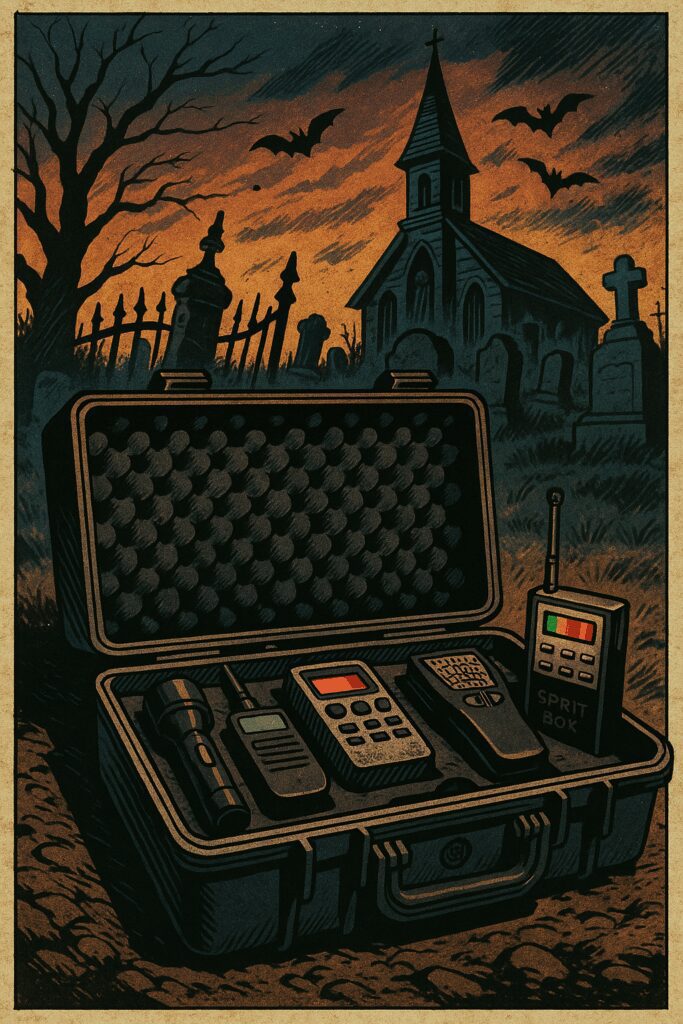
You don’t have to go crazy with the amount of equipment for cemeteries. Bring what you can manage, and what works best for the conditions. Still, there’s some gear you gotta have.
Essential Gear
- Flashlight or LED lantern (You have to see in the dark so you don’t break your ankle)
- EMF meter (to detect energy anomalies)
- Digital recorder (to capture ghostly voices)
- Notebook (to document the oddness around you)
- Camera (your phone will work just fine)
Extras
- Night vision camera
- Motion sensors
- Trigger objects (something from their time in life that would resonate with spirits)
Avoid apps. They’re made to detect your location and have built-in word libraries made to respond to the place and your questions. Their responses would be false positives, not true ghostly responses.
Investigation Techniques That Work Outdoors
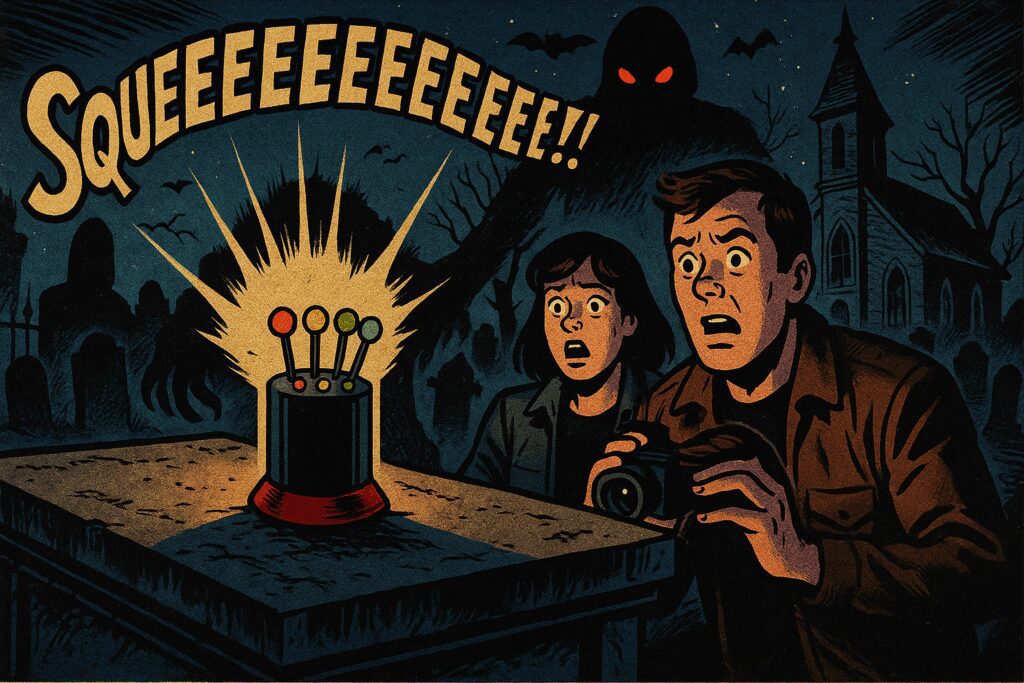
Cemeteries and graveyards are outdoor investigations, which means you have special considerations for interpreting evidence and gadget selection. Things like REM pods and motion detectors need extra scrutiny because any little thing can set them off like critters, grass and bugs.
Also, I’d doubt any temperature anomalies because open areas tend to experience them more than a building.
First, get a baseline reading of the area. That’s as simple of walking around the areas you want to investigate and noting what your EMF meter and temperature gauge tells you. When you investigate, you want to compare that with changes when you ask ghostly questions. Also, sit in silence to hear the background noise. That helps debunk auditory anomalies later.
Next, just sit and ask question during your ghost hunt. Listen. Feel. Let the environment in. Take notes in your book with the time of the weirdness you feel. If you get a chill, see if the temperature dropped around you.
As always, have a buddy with you. It’s just for safety. When you’re outdoors, critters and the living can make things a bit hairy for ghost hunters.
One last thing, keep your eyes open. You never know when something may manifest in a shadowy form. Your eyes are still better than a camera.
Interpreting Activity In A Cemetery
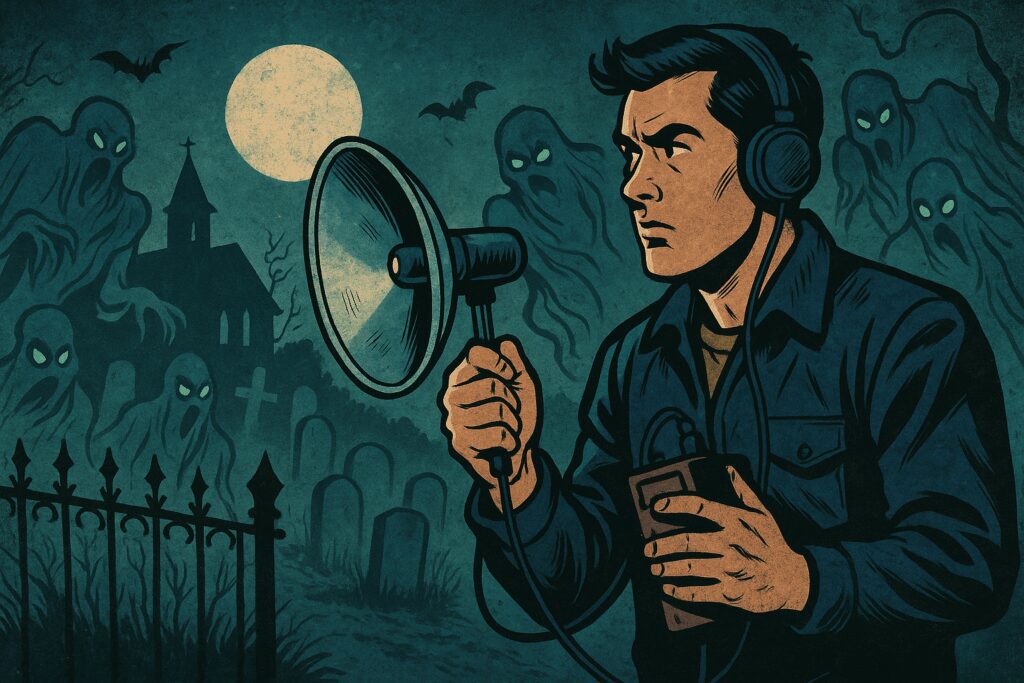
As you review evidence, keep a few things in mind:
- What’s normal (traffic sounds, wind, critter sounds, your stomach gurgling … it happens)
- What’s suspicious (footsteps approaching you … when you were alone)
Compare those two categories with signs of a haunting. If you can’t explain it, you might something.
Now, let’s address the elephant in the room: People can easily call something ghostly activity because they desperately want to capture ghostly evidence. Ninety percent of what you capture is most likely normal stuff. Use Occam’s Razor to sort your evidence: The simplest explanation is usually the correct one.
Once you run out of simple explanations, then you may have something worth sharing.
What To Do After A Graveyard Investigation
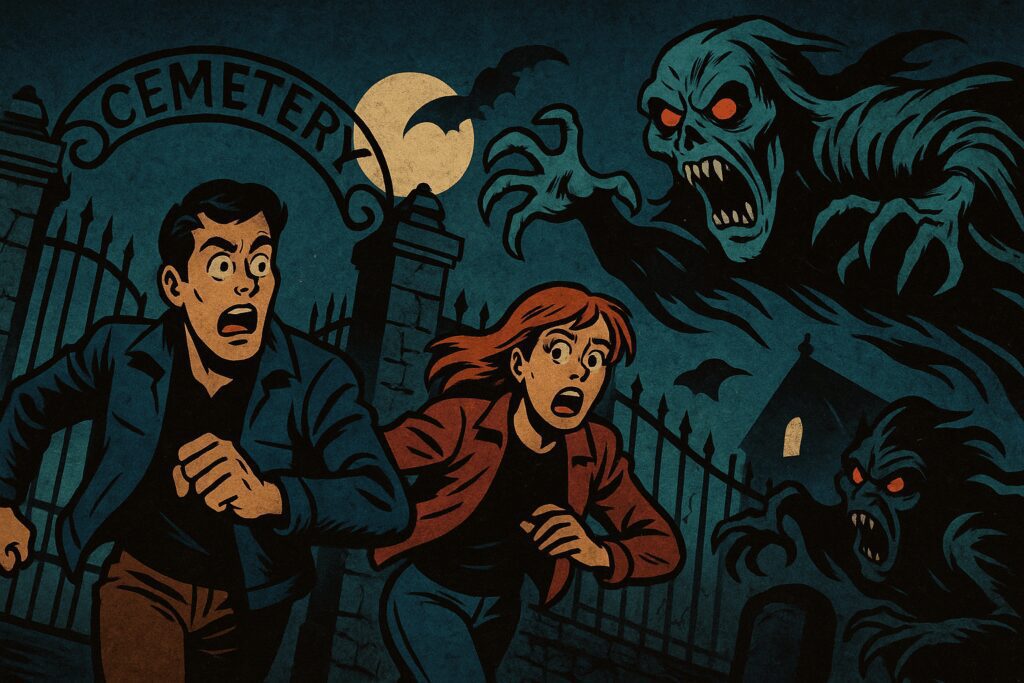
Now that you’ve wrapped your ghost hunt, you’ve got a couple of chores to do. First, cleanse yourself of any ghostly funk. It’s not uncommon to have a hangover from ghost hunting. Get some rest and, perhaps, try a clearing technique to make sure you don’t pick up a ghostly hitchhiker.
Next, review your evidence and compare it to your notes. You want to put extra focus on the anomalies you picked up on your gear as well as your senses.
Finally, write that ghost hunting report. Really, so many ghost hunters don’t publish their findings. I have no idea why. If the point is to prove ghosts exists, you need to let people know you found a ghost. Now, you don’t have to publish everything. Just release the most compelling evidence.
And … you can use this handy-dandy ghost hunt report post to help out.
Recap
Graveyards and cemeteries offer a great training ground for newbie ghost hunters. You can test out new gear, try new experiments, and train your senses. The only things you need are a couple of gadgets, flashlight and notebook. If it’s a public cemetery during the day, have at it! Otherwise, get permission in writing. Yes, it’s like taking a field day trip in elementary school, but it keeps you out of jail, eh?
Next, always be respectful of the dead and their families. Death is traumatic for the deceased and the living. Your ghost hunt should never intrude on people suffering the loss of a loved one.
Finally, review your evidence and report it within a week or two. To me, you didn’t go ghost hunting unless you bring the receipts.
If you’ve had a spooky encounter in a cemetery, let me know in the comments.
Thanks for reading Ghostly Activities. Much appreciated and take care!
